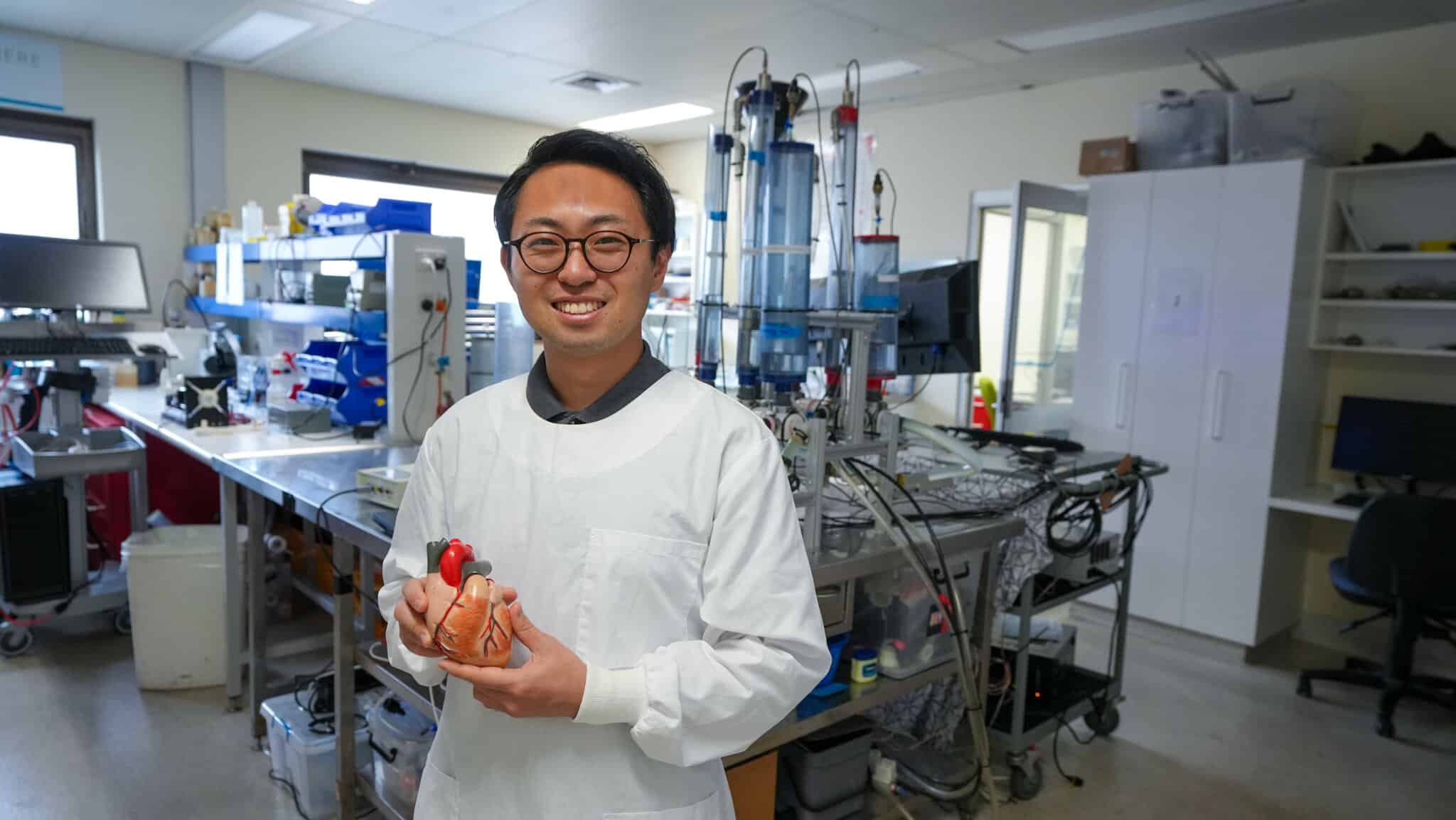
A pioneering study led by Dr Christopher Raffel and Professor John Fraser, is focusing on advancing the treatment of heart valve diseases, specifically targeting mitral regurgitation, a condition that significantly impacts the quality of life of around 200,000 Australians.
The pair’s research initiative, funded by a grant from Wesley Research Institute, seeks to refine the diagnostic and treatment process for mitral regurgitation through the development of a novel ultrasound assessment technique, promising a major leap forward in cardiac care. Collaborating on this vital project is the Critical Care Research Group is Dr Hideaki Nonaka (featured above), a cardiologist from Japan, who brings a wealth of experience in echocardiography to the team.

Mitral regurgitation occurs when the heart’s mitral valve does not close tightly, allowing blood to backflow into the lungs. This can lead to heart failure if not accurately diagnosed and treated. Patients become short of breath and cannot go about their normal business.
The team’s research is particularly focused on developing a new ultrasound assessment to prevent heart failure after transcatheter edge-to-edge repair (TEER). TEER is a minimally invasive procedure that has changed the landscape of treatment for mitral regurgitation. Despite its success, approximately 30% of patients undergoing TEER still develop heart failure due to undetected left heart dysfunction (LHD).

Together, the research team aims to detect LHD before TEER by using an advanced ultrasound technique, enabling clinicians to provide the most effective treatment possible.
The Wesley Research Institute grant will play a crucial role in their research, supporting the multidisciplinary team in their efforts to improve the predictability of heart muscle functionality post-procedure, addressing a crucial gap in current treatment methodologies.
Cardiac diseases are the number one killer in the world and valvular disease is more and more common as we get older.
Professor John Fraser
Professor Fraser is the Director of the St Andrew’s War Memorial Hospital Intensive Care Unit and the Critical Care Research Group.
“Currently most mitral valve repairs are done by stopping the heart under deep general anaesthesia with subsequent long recovery times in hospital, however cardiologists through research, have created the ‘keyhole TEER technique’, which gives them another option.
“The mitral valve TEER procedure is incredibly complex, akin to steering a jet plane to land on a football field. Imagine fixing a valve that’s still beating at 90 beats per minute! It takes a great deal of skill from an entire team. Under some light sedation, a needle is placed into vessels at the top of the leg – through which is fed a wire that is then advanced up the ‘hallway’ towards your heart under ultrasound guidance,” said Professor Fraser, painting a vivid picture of a procedure that uses ‘paper clips’ to bring the valve’s floppy edges together, effectively stopping the backflow of blood.
“This technique can be done in several hours, after which the patient might stay one night in ICU and be back home within two to three days, with no long recovery.”